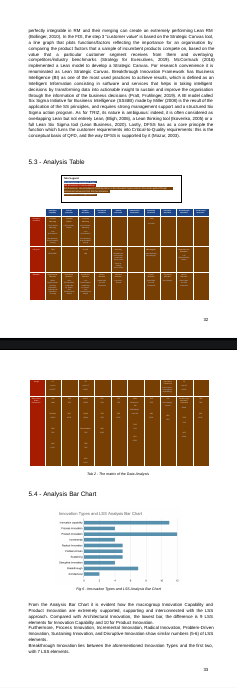The Strategic Power of Combining Kaikaku with Lean

Digital Transformation (DT) and Lean Six Sigma (LSS) represent two distinct approaches to organisational improvement. While digital transformation embodies the concept of kaikaku—a Japanese term for radical, disruptive change—Lean Six Sigma aligns with Lean principles, focusing on continuous improvement through small, incremental changes. For many organisations, particularly those in regulated sectors like the public domain and healthcare, finding a balance between these philosophies can be challenging as they strive to innovate without compromising stability.
Organisations collaborating with RedDog Transformation benefit from a unique approach to navigate this balance. By blending the transformative potential of kaikaku with the incremental advantages of Lean, they can achieve meaningful, sustainable change without sacrificing operational reliability. This blog explores the distinctions between kaikaku and Lean, presents a hybrid roadmap developed by RedDog Transformation, and delves into insights from research on the intersection of Lean Six Sigma and innovation.
Kaikaku vs. Lean: Embracing Radical and Incremental Change
Kaikaku represents radical transformation, an approach that overhauls processes, structures, and strategies to align with digital advancements. For many organisations embarking on digital transformation, kaikaku means reimagining traditional practices to fully harness the potential of technology. A crucial aspect of digital transformation is disruptive innovation—a type of innovation that fundamentally changes how an organisation operates, often redefining industry standards. Disruptive innovation challenges the status quo and seeks to create entirely new systems, workflows, or customer experiences.

Key Insights from the Research
However, kaikaku and disruptive innovation can be challenging to implement in conservative or regulated environments like government or healthcare, where gradual, measured change is typically preferred.
Lean, on the other hand, emphasises continuous, incremental improvement by identifying and eliminating waste and increasing efficiency. Lean principles within Lean Six Sigma promote systematic, ongoing improvements, allowing organisations to evolve responsibly, preserve what works, and carefully enhance processes. Lean provides a structured, practical way for organisations to implement change, ensuring that they remain agile and adaptable.
Due to their political, structural, or conservative nature, sectors such as the public domain and healthcare often lean towards digitalisation solutions rather than true digital transformation. Even when convinced they are implementing digital transformation, these organisations often end up with technology integration projects that lack the foundational strategic change required for true transformation. This approach tends to fall under Lean, focusing on incremental improvements rather than a holistic overhaul.
True digital transformation is more than just adopting digital tools; it requires a kaikaku foundation—a strategic redesign of the organisational vision to fully integrate digital values and embrace disruptive innovation. Without this foundation, the full benefits of digital transformation remain out of reach, and the result is often mere technology integration rather than a transformative change. While technology integration brings its own advantages, it also comes with hidden costs, which will be explored in a dedicated article. For organisations in these sectors, a Lean approach can effectively maximise the benefits of incremental digital improvements, but recognising the limits of such an approach is crucial if the goal is true transformation.
Many organisations find that a balance between kaikaku and Lean best serves their needs, enabling both innovation and stability. This hybrid approach allows them to benefit from transformative digital change while maintaining a reliable foundation.
What is Lean Six Sigma (LSS)?
Lean Six Sigma (LSS) is a powerful methodology that merges the strengths of Lean and Six Sigma to drive efficiency, reduce waste, and improve quality across organisational processes.
- Lean focuses on eliminating waste and creating more value by optimising processes and reducing non-value-adding activities. Its emphasis is on continuous improvement, often through incremental changes that gradually improve efficiency and customer satisfaction. Lean originated from the Toyota Production System, with tools like 5S, Value Stream Mapping, and Just-In-Time being central to its approach.
- Six Sigma complements Lean by using data-driven techniques to reduce variation, minimise defects, and enhance quality. Developed by Motorola, Six Sigma relies on statistical analysis and structured problem-solving frameworks, such as DMAIC (Define, Measure, Analyse, Improve, Control), to address complex issues and ensure consistent, high-quality outcomes. Six Sigma aims for a defect rate as low as 3.4 per million opportunities, which supports organisations in achieving near-perfect quality.
Together, Lean and Six Sigma create a comprehensive framework that enhances both efficiency and quality. Lean addresses process speed and waste, while Six Sigma reduces variability, leading to more predictable and reliable processes. Lean Six Sigma enables organisations to adopt a dual approach: improving process flow and removing inefficiencies while also using data analysis to prevent errors and maintain quality standards. This combined focus is especially valuable in industries that rely on both efficiency and accuracy, such as healthcare, manufacturing, and public services.

For organisations looking to foster a culture of ongoing improvement, LSS is a highly effective choice. It empowers employees at all levels to participate in identifying and solving problems, creating an environment where continuous improvement is embedded into the organisational DNA.
Insights from Research: The Intersection of Lean Six Sigma and Innovation
Organisations that partner with RedDog Transformation gain insights from research exploring how Lean Six Sigma intersects with innovation. This study has been synthesised into a multidimensional matrix, providing a structured approach to applying LSS principles within various types of innovation.
- Shared Principles Between Innovation and LSS: Despite their different focuses, both LSS and innovation share fundamental principles such as customer-centricity, quality improvement, and structured methodologies. These shared values allow organisations to leverage LSS not just for stability but also as a supportive framework for innovation.
- Types of Innovation: The study categorises innovation into multiple forms, each benefiting from the structure provided by LSS. The types include:
- Process Innovation: Improves internal workflows, aligning closely with LSS’s operational excellence goals.
- Product Innovation: Focuses on creating or improving products, with LSS tools supporting quality control and customer feedback.
- Incremental Innovation: Embodies gradual improvements, naturally aligning with Lean principles.
- Radical Innovation: Represents disruptive change, with LSS tools helping manage risk and scalability.
- Problem-Driven Innovation: Aims to solve specific issues, making it compatible with LSS’s problem-solving methodologies.
- Sustaining and Disruptive Innovation: Balances current offerings with disruptive elements that redefine market standards.
- Architectural and Breakthrough Innovation: Introduces high-impact changes that can transform organisational structures, supported by strategic LSS applications.
- The Multidimensional Matrix: This matrix, developed from the research findings, provides a structured framework for applying LSS across different types of innovation. The matrix includes four dimensions:
- 1st Dimension: Innovation Types Categorises different types of innovation, offering clarity on where LSS can support specific goals.
- 2nd Dimension: Shared Principles Highlights communalities between LSS and each innovation type, leveraging areas where LSS’s focus on quality and efficiency aligns with innovation objectives.
- 3rd Dimension: Tools and Systems Specifies relevant tools and frameworks for each type of innovation. For example, Value Stream Mapping (VSM) may apply to process innovation, while Quality Function Deployment (QFD) supports product innovation.
- 4th Dimension: LSS Applications Lists specific LSS tools and methods (e.g., DMAIC, DFSS, TRIZ) that can be tailored to support innovation within each category, enabling organisations to apply LSS systematically to foster structured innovation.
This matrix provides organisations with a clear, actionable approach for applying LSS within innovation efforts, supporting sustainable transformation that balances stability with progress.

A Hybrid Roadmap: Enabling Sustainable Transformation
Organisations working with RedDog Transformation are guided by a tailored roadmap that combines the strengths of kaikaku and Lean. This structured approach respects each organisation’s unique pace, goals, and culture, making it especially suitable for sectors where cautious, sustainable change is essential. Below is an outline of this hybrid roadmap:
- [Kaikaku/Lean] Understanding culture and objectives: Transformation efforts are aligned with your organisation’s values, laying a foundation for meaningful change that resonates across all levels.
- [Kaikaku] Identifying hidden digital values and exploring new ones: Organisations uncover digital values already embedded within their culture and practices, while also discovering new values that align with their vision. This process establishes a strong foundation for impactful transformation at a strategic level.
- [Kaikaku] Designing or redesigning organisational strategy: Digital values are integrated into a holistic strategy, aligning transformation initiatives with long-term goals to support sustained growth and adaptability.
- [Kaikaku/Lean] Assessing challenges and exploring innovation: By balancing innovative solutions with practical improvements, organisations create a pathway for addressing current challenges with a forward-thinking perspective.
- [Kaikaku] Developing a new business model focused on people and technology awareness: A business model centred on digital capabilities and human capital establishes a foundation for a culture that embraces transformation.
- [Kaikaku/Lean] Tailoring projects or programmes to align with organisational goals: Each initiative is customised to fit the organisation’s pace and culture, especially important for sectors that require a cautious approach.
- [Kaikaku] Mobilising the necessary capabilities and resources: Radical change often calls for new skills and advanced technology, and resources are secured to support the journey.
- [Kaikaku] Implementing bespoke solutions: Custom solutions are crafted and integrated seamlessly into existing systems, enabling both significant transformation and incremental improvements.
- [Lean] Offering ongoing support and follow-ups: Consistent support helps reinforce the transformation process, allowing for adaptive adjustments that keep organisations agile.
- [Lean] Identifying new projects until achieving the designed ecosystem: This final step sustains growth and adaptability, ensuring alignment with the envisioned ecosystem.
This roadmap provides a balanced approach, combining the stability of Lean with the transformative power of kaikaku. Each stage is thoughtfully adapted to support both radical change and gradual progress in line with the organisation’s goals.
A Balanced Path to Sustainable Transformation
Organisations that leverage this hybrid roadmap and structured framework enjoy the benefits of both incremental improvement and transformative change. The balanced approach provides a sustainable path to innovation, allowing them to enjoy the advantages of kaikaku without sacrificing the stability that Lean provides.
This methodology is particularly valuable for sectors that are highly regulated or require careful, calculated change, such as healthcare, public services, and education. By embracing both radical and incremental transformation, organisations can maintain resilience while adapting to new opportunities.
Interested in exploring our research findings in depth? Connect with RedDog Transformation to receive a free copy of the research report and learn more about how a partnership with us can support meaningful, lasting growth for your organisation.
RedDog Transformation (RDT)
Go Digital. Be Human.



